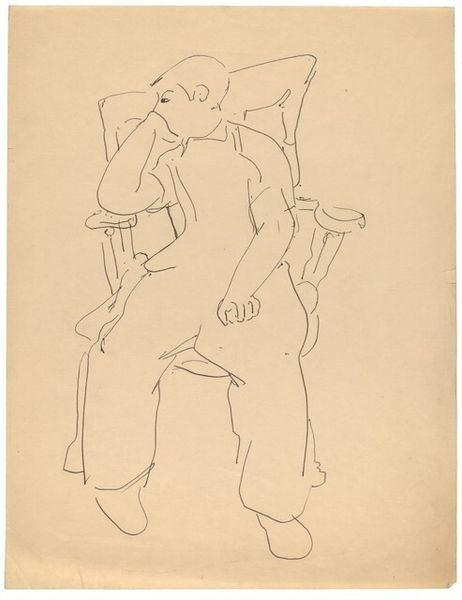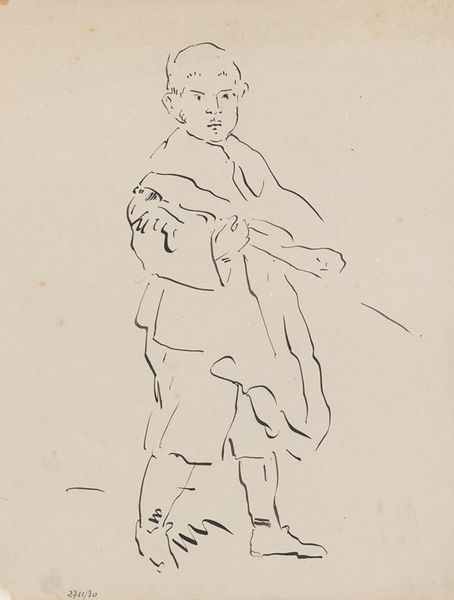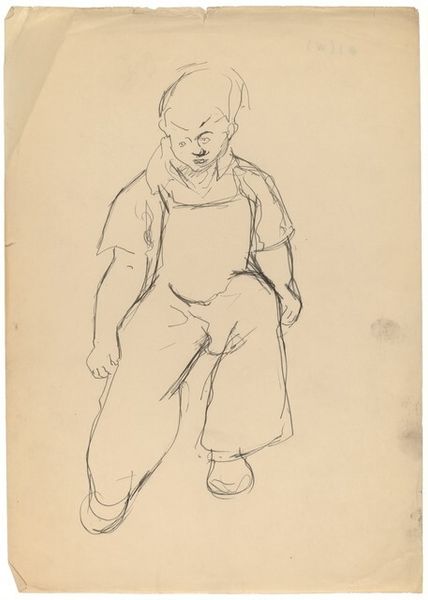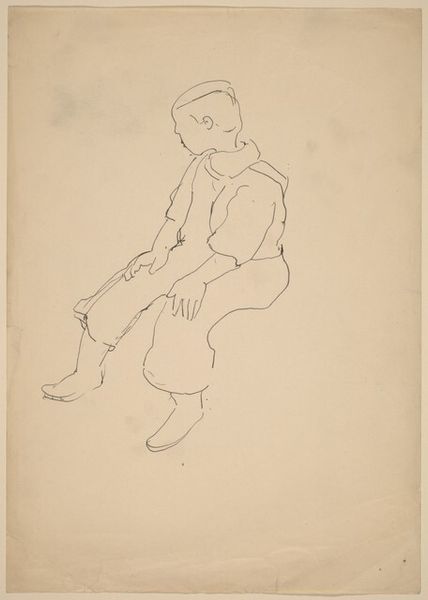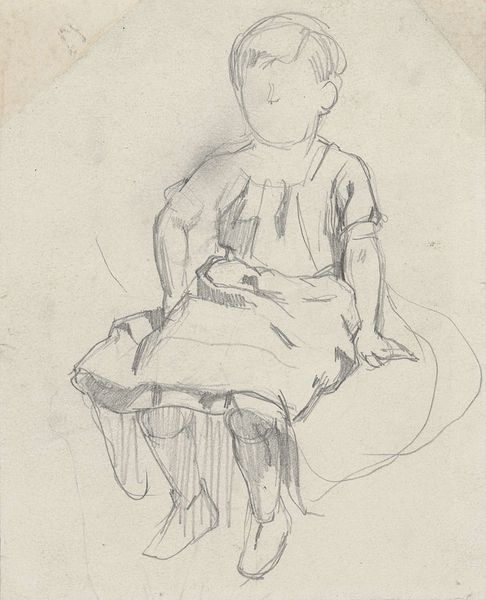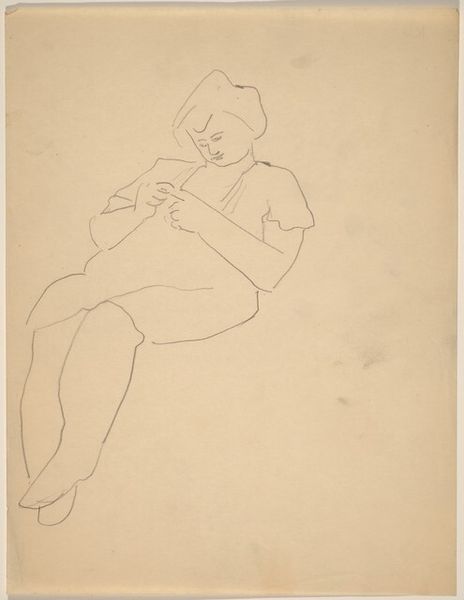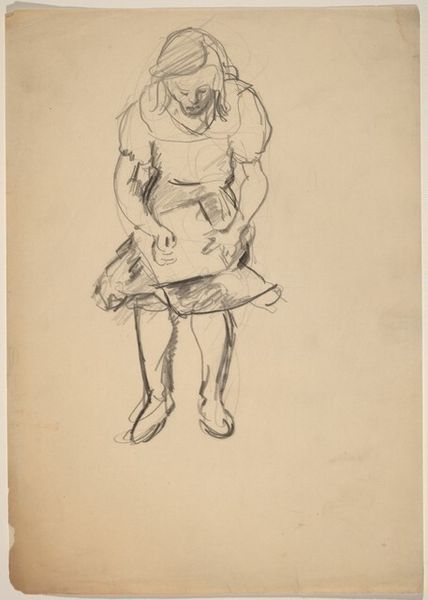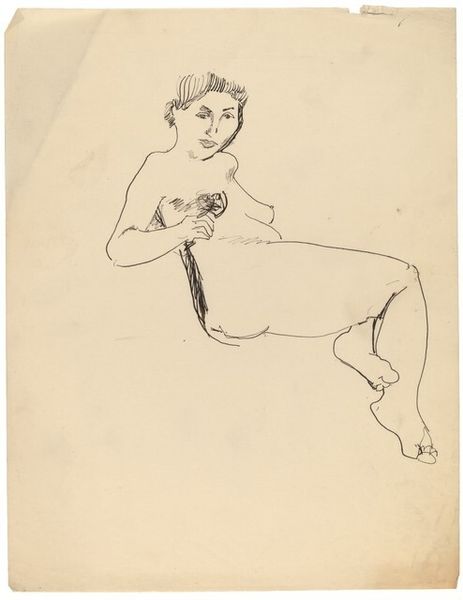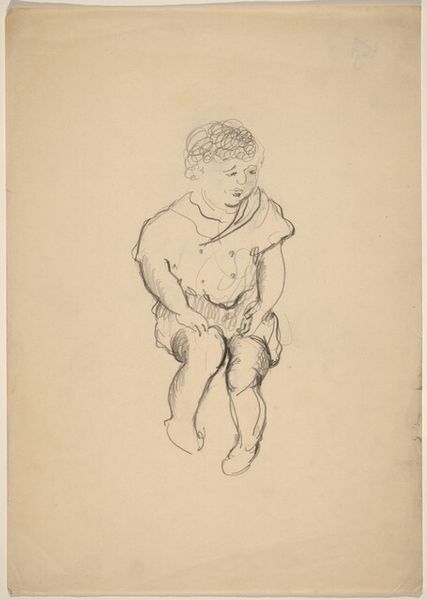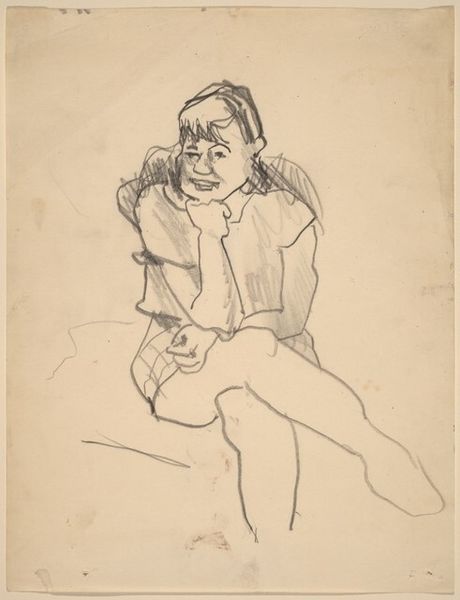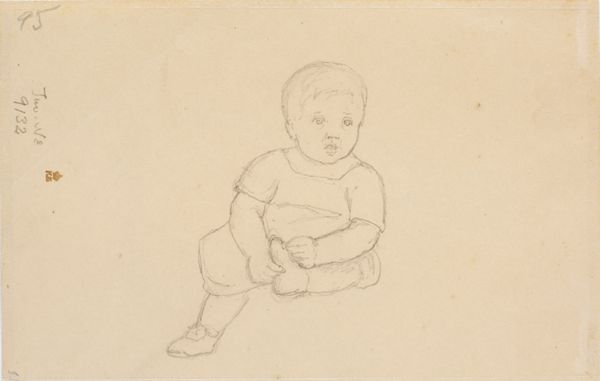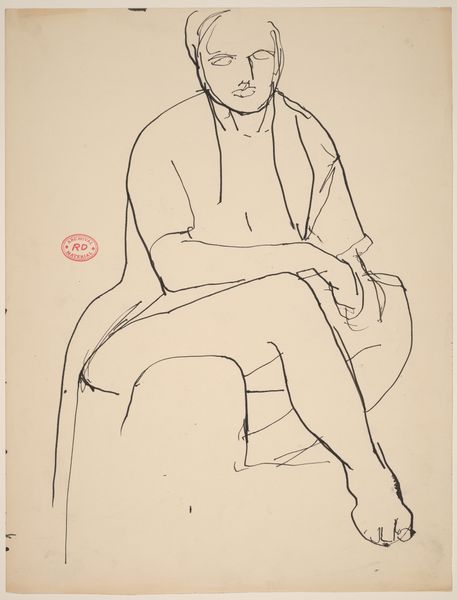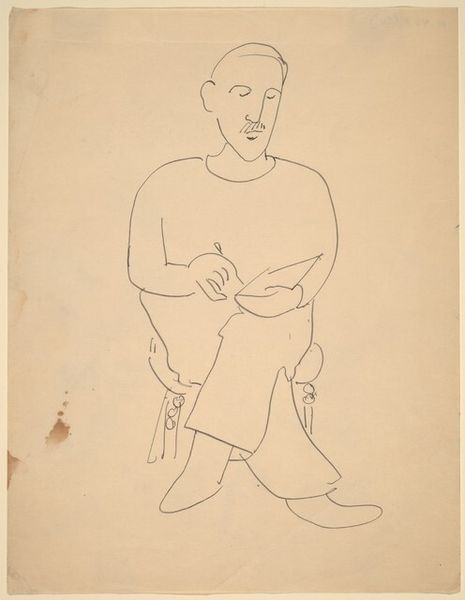
drawing, ink
#
portrait
#
drawing
#
figuration
#
ink
#
ink drawing experimentation
#
monochrome
Copyright: National Gallery of Art: CC0 1.0
Curator: This is "Seated Male Wearing Overalls," a drawing by Mark Rothko, executed in ink. It’s a compelling piece of figuration, part of Rothko’s early experiments. Editor: My initial reaction? Intimacy. It's like catching someone in a private moment, maybe just after a long day. The simplicity of the line makes him seem so vulnerable, like a raw nerve exposed. Curator: Exactly. Although known for his later color field paintings, here we see Rothko engaging with portraiture. What's significant is how this drawing departs from traditional academic portraiture prevalent at the time, especially given the rise of socialist realism. Editor: The overalls...they're a uniform of labor, aren’t they? Yet, Rothko renders them almost…softly. There's a gentleness here, a real empathy that you don’t always associate with, well, just overalls. It's weird, but they feel like poetry. Curator: Right, this work could be read as an examination of the American worker in the 1930s, just before World War II, as social realism gains momentum in the US art world, and a populist rhetoric starts to show in art. He also depicts him off center. It feels human. Editor: Off-center...yes! It's not posed, not symmetrical, no glorifying, no idealized heroism. More like just...is. Look at those lines around his jaw—slightly uneven, but completely real. Like a glimpse of someone’s soul sketched in ink. You can almost hear his thoughts or feel the tiredness etched on his face. Curator: You're right, his later work stripped away the representational. The emotional rawness remains though, doesn't it? Editor: Totally. Years later, there's just a pure wash of color meant to deliver feelings. Here it starts, more organically, more explicitly. Maybe what resonates the most is not what he *looks* at, but the heart Rothko has for that worker. It makes me wonder what that heart knew about struggle, life. Curator: Thank you for your perspective. Seeing his journey from these early figurative works really enriches our appreciation of his later, abstract expressions. Editor: And perhaps reveals that those later canvases were always portraits, really, but of inner landscapes we couldn’t otherwise see.
Comments
No comments
Be the first to comment and join the conversation on the ultimate creative platform.
